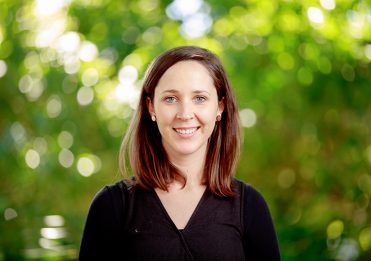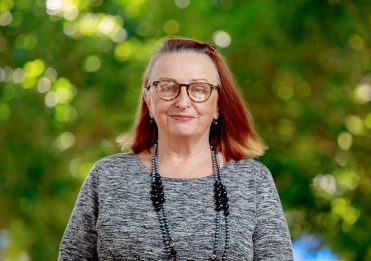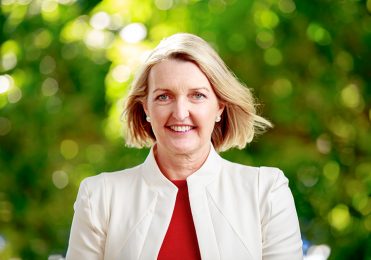Ms Alison Dare, Director of Humanities
Originally published May 2017
When I was a teenager in the 1980s, 7 pm was an important time. After finishing our evening meal, we would sit reverently in front of the family’s only television and listen to the news. Except for the interjections of my father, who would provide a running commentary on the utterances made by those politicians he particularly loathed, the information that the news provided was rarely challenged; it had gravitas. The notion that what we were watching could be wrong, that there could be a thing called ‘fake news’ or that there could be an alternative ‘truth‘ was inconceivable. Of course, other versions of the stories existed and what was presented had its own perspective (even agenda) but importantly, the distinction between falsehood and fact was easily discernable; there was an understanding that some forms of information were more worthy of consideration than others.
Sometimes I ask my students if they watch the news. It seems like a valid question given that I am a teacher of the Humanities and knowledge of the world around us is crucial and feeds directly into the classroom. So much of what is taught relies on the assumption of certain seemingly common understandings—knowledge that we adults take for granted. More often than not however, the answer to my question is no, watching the nightly news or reading a newspaper is not part of the make-up of their lives. And should we as teachers expect it to be so? Information delivery has changed so drastically even in the last 10 years since the introduction of the iPhone in 2007 that the notion of devoting a fixed amount of time at a static point in space to a discreet body of information would seem clunky and inefficient in the very fluid, interactive world of updates and notifications. Information is at our fingertips any time we need it—we have moved from an era of information scarcity to one of abundance.
But if we are in the midst of a so-called information revolution, spoilt for choice in terms of access to knowledge that was once the preserve of the privileged, it is not the first time this has happened. In 1452, Johannes Gutenberg’s printing press broke the Papacy’s hegemony on knowledge. For the first time, the opportunity to read and interpret scriptures was open to all—or at least anyone who could read. So importantly, although this invention facilitated the explosion of knowledge that we call the Renaissance, it did so by ushering in a growth in literacy and, while literacy rates didn’t drastically change overnight as a result of the printing press, this invention ultimately had a profound effect on reading and writing throughout Europe (Eisenstein, 1979).
Does the availability of information that we all enjoy make us (and our students in particular) more curious to learn about the world as it did in the 15th century? It seems that it has not necessarily made them more discerning. A recent study by the Stanford History Education Group concluded that most American high-school students had real difficulty in distinguishing real from fake information when evaluating online sources (Wayland-Smith, 2017). My anecdotal observation is that despite access to high-quality resources in our own Library, which enable students to explore their given research topics in real depth, without close supervision, many would opt to skim the surface of their investigation, never moving beyond the basic Google search with few questions asked about the nature of the information. It seems that the availability of excellent resources does not automatically culminate in deep understanding.
Perhaps the uncritical way in which students consume the information on their screens is in part explained by the broader trend that has seen all of us relying more heavily upon populist media platforms as a source of information about the world. According to a 2016 report by the United States of America (USA)-based Pew Research Centre, a majority of adults in the USA—62 per cent— get their news on social media, and 18 per cent do so often. In Australia, a similar trend is evident. According to a survey conducted by the University of Canberra (Watkins et.al., 2016) respondents were asked which—if any—social network services were used for finding, reading, watching, sharing or discussing news. In this, Facebook was the most prominent at almost 45 per cent. The move away from carefully curated information to a reliance on social media platforms where the trivial sits alongside the profound (news of the latest terrorist bombing might be interrupted by a notification of the most-watched pet YouTube clip), must surely make it more challenging for students to make judgements, not just about what constitutes the real from the fake, but from a sense of what is relevant and important and what isn’t.
The mere abundance of information will not necessarily of itself make our students more informed. Indeed, the erosion of more formal, structured and carefully edited avenues to learn about the world (the nightly News for example) has arguably made it more difficult for them to differentiate what is worth knowing from what isn’t—what is to be believed from what is to be rejected. Students need to be critical consumers of the information that they are immersed within. Hence, skills that are designed to develop critical thinking are crucial and must be taught. These skills, are embedded into every Humanities lesson. They are both explicitly taught and implicitly underpin all discussion regarding the nature of knowledge and how we arrive at the conclusions we reach. Instead of accepting uncritically the information that they find or are given by the teacher, students are required to ask questions about the sources. They are provided with the tools with which to draw discerning and insightful conclusions from evidence. Ultimately, the ready access to almost unlimited information about the world is overwhelmingly positive providing that our students and the rest of us can make the right choices about what we read and how we read it.
References
Eisenstein, E. L. (1979). The Printing Press as an Agent of Change. Cambridge, UK: Cambridge University Press.
Gottfried, J., & Shearer, E. (2016, May 26). News Use Across Social Media Platforms, Journalism and Media, Pew Research Center.
Wayland-Smith, E. (2017, March 3). The Trends Report. The Chronicle of Higher Education. 63:(27).
Watkins, J., Park, S., Blood, W., Deas, M., Dunne Breen, M., Fisher,… Ricketson. M. (2016). Digital News Report. University of Canberra.
Read reflective commentary from Director of Humanities, Ms Alison Dare, on her article, ‘Information’s re-revolution: reading, writing and ruminating’.
In 2017, I reflected upon the information culture that students inhabit and lamented that most of them do not watch, as I did at their age, the news. It seemed their exposure to the world came to them in far less structured and curated forms, via a random and jumbled flow of facts, truths and trivia. My point in making this assertion was to stress the importance of critical thinking skills as a way of making sense of an increasingly complicated world.
Recently, I have thought more closely about the relationship between our students and the world beyond school. We often hear in the media that young people are disengaged—glued to their devices and not interested in the world. It seems however, that while young people might make sense of the world differently to their parents and teachers, they are nevertheless deeply interested in national and global issues.
This was confirmed earlier in the week at the Year 10 mock UN Summit. With a theme of climate change girls were challenged to set global emissions targets upon which all nations could agree. Considering climate change was cited in the General Assembly of the United Nations last year, as the ‘defining challenge of this era’; it is a pertinent and complex topic, and one that must be approached with different perspectives.
While students were very passionate about this issue and had clearly formulated their own preconceived ideas, the activity required them to put aside their personal opinions as they advocated on behalf of the nation to which they were assigned. While on an obvious level, the ability to understand divergent ideas on a topic such as this requires critical thinking skills, underpinning this ability is a less recognised disposition which has to do with emotional intelligence or the ability to empathise with other standpoints.
The importance of both of these dispositions was outlined recently in a Deloitte Access Economics Report that asserted approximately 85 per cent of new jobs will not only require skills of the head but also of the heart (Deloitte, 2017). While, as a teacher of Humanities, I have always understood the place of empathy in the classroom, my thoughts about thinking have developed. It seems critical thinking and empathy are not two distinct entities but indeed rather interdependent.
References
Deloitte Access Economics. (2017). Soft Skills for Business Success. DeakinCo.




